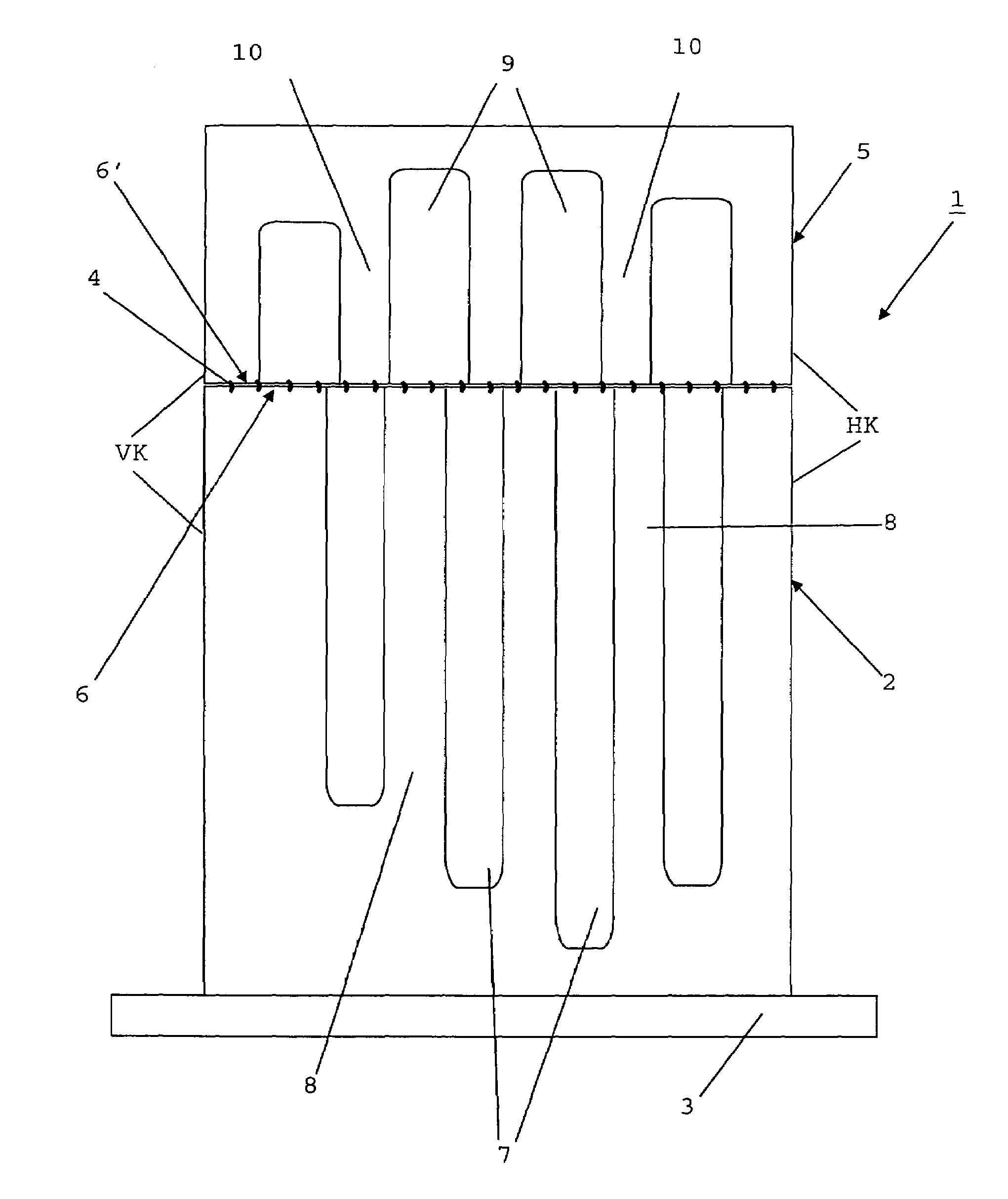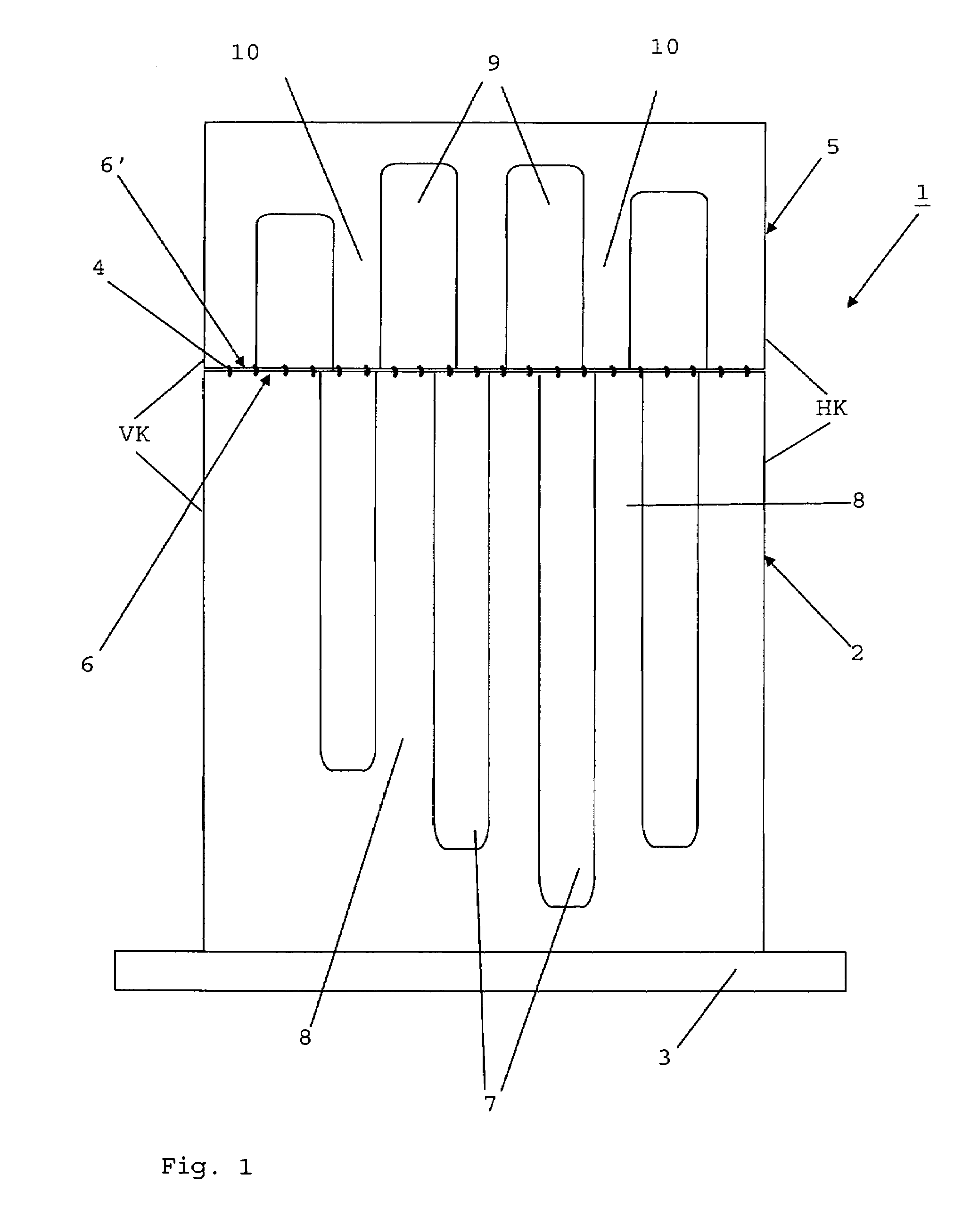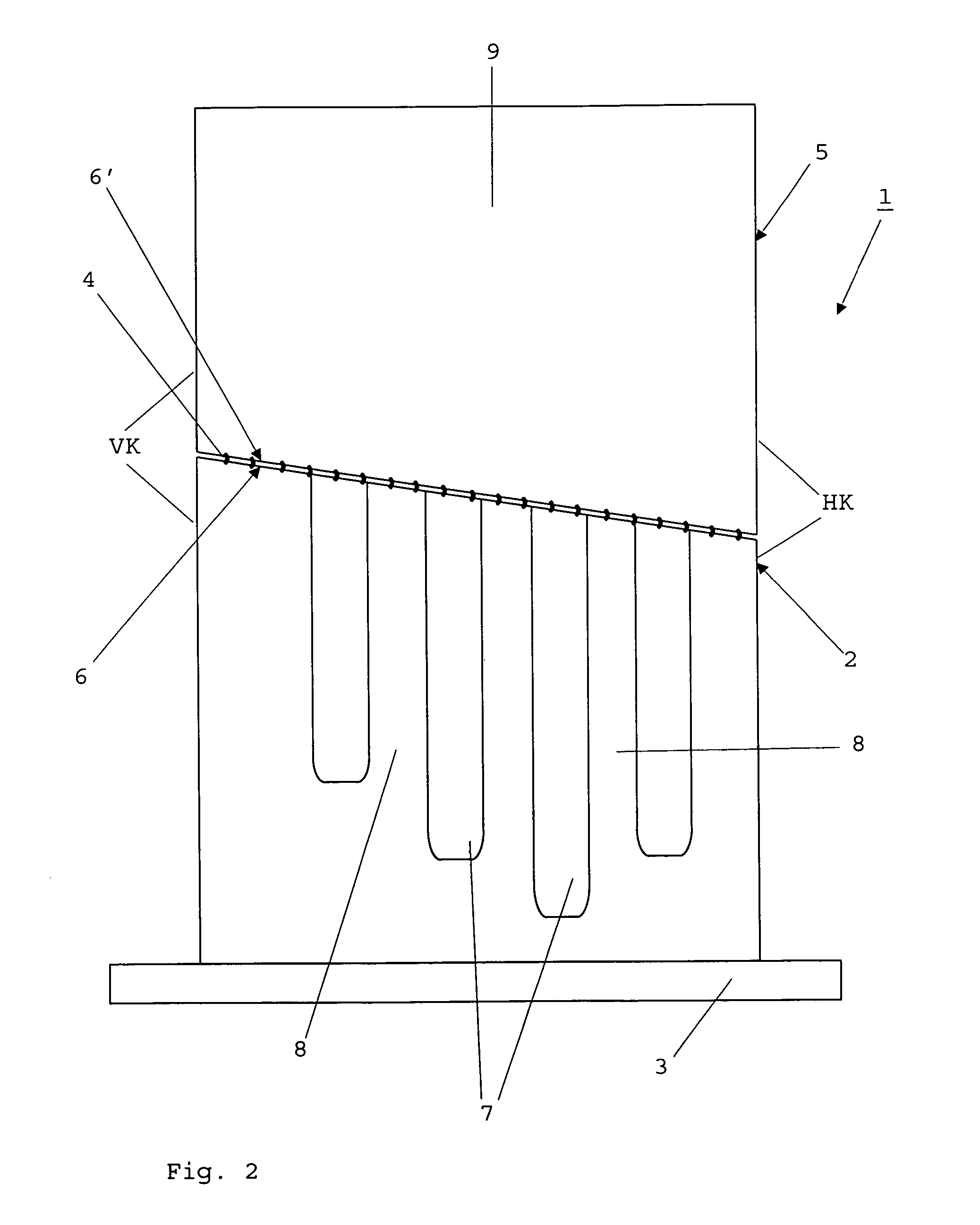Hollow fan blade for aircraft engines and method for its manufacture
a technology for aircraft engines and fan blades, applied in the field of hollow fan blades, can solve the problems of automatic shutdown and mass loss of the fan blade tip, and achieve the effect of less weigh
- Summary
- Abstract
- Description
- Claims
- Application Information
AI Technical Summary
Benefits of technology
Problems solved by technology
Method used
Image
Examples
Embodiment Construction
[0012]According to FIGS. 1 and 2, the fan blade 1 is of a two-part design and consists of a blade base section 2 (blade bottom portion 2) with blade root 3 and a blade tip section 5 (blade top portion 5) assembled to the blade base section 2 by means of a joining weld 4. The blade base section 2 according to FIGS. 1 and 2 is made of metal, for example titanium, or a metal alloy, and contains, in its interior, several, long cavities 7 with essentially rectangular to oval or round cross-section which originate at the upper abutting edge 6 of the blade base section 2. The cavities 7 are dimensioned such that the remaining wall thickness and the thickness of the reinforcements 8 formed between the cavities 7 provide a fan blade 1 which satisfies the high load and strength requirements in this area. This applies similarly to the depth of the cavities 7, which can be larger in a mid-section than in the higher loaded outer sections near the leading edge VK or the trailing edge HK, respecti...
PUM
| Property | Measurement | Unit |
|---|---|---|
| weight | aaaaa | aaaaa |
| strength | aaaaa | aaaaa |
| power | aaaaa | aaaaa |
Abstract
Description
Claims
Application Information
 Login to View More
Login to View More - R&D
- Intellectual Property
- Life Sciences
- Materials
- Tech Scout
- Unparalleled Data Quality
- Higher Quality Content
- 60% Fewer Hallucinations
Browse by: Latest US Patents, China's latest patents, Technical Efficacy Thesaurus, Application Domain, Technology Topic, Popular Technical Reports.
© 2025 PatSnap. All rights reserved.Legal|Privacy policy|Modern Slavery Act Transparency Statement|Sitemap|About US| Contact US: help@patsnap.com



